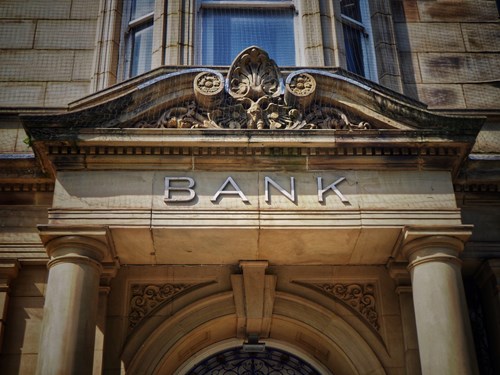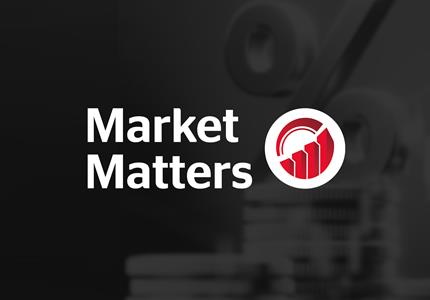

This is not another 2008 but global policymakers face a major challenge
Ravenscroft chief investment officer Kevin Boscher reflects on recent banking woes and what it means for markets.
It has been a volatile couple of weeks for markets due to concerns over the health of the banking sector in the US and Europe. The problems started with the collapse of Silvergate Capital Corp, a crypto-friendly bank hit hard by the implosion of crypto exchange FTX. This was swiftly followed by the bailout of Silicon Valley Bank (SVB) over last weekend, the seizure of Signature Bank and an injection of liquidity from other large banks into First Republic over the course of last week. The panic spread to Europe when Credit Suisse was forced to initially turn to the Swiss National Bank (SNB) for emergency funding before succumbing to a forced takeover by UBS. This latest banking crisis has come as somewhat of a shock but with the Fed and other central banks having tightened monetary policy significantly over the past year or so, it was likely that something would break. Equities have understandably fallen on the news whilst government bonds have rallied hard.
The US and global authorities have acted quickly in an effort to mitigate contagion and shore up confidence. The Fed has provided emergency liquidity to US banks using new and existing facilities, guaranteed all deposits at SVB and Signature, arranged additional funding for First Republic (another troubled regional bank) and then made US Dollar swaps available to other central banks. In the case of Credit Suisse, the SNB support proved insufficient and the authorities, working in tandem with the Fed and other central banks, forced the takeover by UBS.
When things move as rapidly as they have done over recent days, it is often difficult to see a clear way forward and it seldom pays to make rash decisions.
Although the situation is still in flux, whether the extreme measures taken by the authorities are sufficient to restore calm or whether the crisis escalates from here will depend on a number of rapidly moving and evolving factors.
Problems facing the industry

Whilst the problems at each of these banks differ, there are several common problems challenging the whole industry in the US and Europe. These problems are largely the consequence of the Fed’s (and other central banks’) rapid and extreme monetary tightening. Banks' profits are under pressure from deteriorating asset quality, slowing loan growth, shrinking reserves, rising deposit rates and steeply inverted yield curves. On the asset side, slowing growth and tighter policy is resulting in deteriorating loan quality and rising loan delinquencies at the same time as any bonds held are likely showing “mark to market” losses. Banks are also no longer growing their loan books, partly due to the inverted yield curve which is unfavourable for the traditional bank model of borrowing short and lending long, but also because of weakening economic activity, falling loan demand and deteriorating loan quality.
On the liability side of their balance sheets, banks are finding it difficult to match the higher rates available in money market funds and are having to raise their deposit rates, which will drag on profits. Also, quantitative tightening (QT) is whittling away bank reserves and deposits, which is impacting profitability and negatively impacting liquidity. In short, US and European commercial banks are facing multiple squeezes on their profits.
A banking crisis such as this is usually a deflationary shock since banks are forced to tighten their loan standards and shrink their balance sheets, which results in slowing credit growth, demand destruction as consumption and investment falls and weaker economic activity. Hence, in the case of the US, the Fed may well have got their wish as financial conditions have now tightened materially, which in turn will push the economy into a deeper and longer recession and will likely lead to the return of powerful disinflationary forces over the coming months. Indeed, one of the key risks here for the economy and markets, in addition to any escalation of the liquidity problems, is that as growth slows, this adds to the pressures on the banking sector, which then responds by further tightening its lending standards and deleveraging their balance sheets, resulting in still weaker growth etc.
The challenge for central banks

This crisis poses a major challenge for central banks. The ECB decided to raise rates by 0.5% last week despite the escalating financial problems. The Fed and Bank of England (BoE) meet this week and will have to decide whether to risk further market volatility by raising rates again or whether to pause as they assess the impact of recent events. The Fed faces a particular challenge since Chair Powell has recently been sounding very hawkish and has indicated to markets that it needs to do more to ensure inflation falls back towards its 2% target. The question is, if it decides to pause will it spook the markets by implying that it is more worried about the banking problems and the risk of a tougher recession than it is about bringing inflation under control? The BoE has a similar decision to make this week but has recently been sounding a lot more dovish, particularly after the pension fund problems in September last year.
The Fed and ECB seem to be treating the dual roles that they have of ensuring stability in the financial sector whilst bringing inflation under control as separate and different, and addressable with different tools. They have rate hikes to fight inflation and liquidity provisions to preserve banking stability. However, in reality, inflation control and financial stability are powerfully linked. As monetary policy tightens, banks face mounting headwinds to their profitability and as the profits outlook deteriorates, this feeds stresses within the financial system and forces banks to become more cautious. This results in an additional tightening of financial conditions which compounds the effects of the central banks’ actions and accelerates the transmission of policy to the real economy.
In my view, the Fed has already over-tightened and made a policy mistake, thus contributing to the banking problems.
The ECB also risk looking very foolish in the not-too-distant future and may quickly have to reverse last week’s rate hike. As I have previously mentioned, in a heavily indebted economy there is a ceiling beyond which rates and bond yields struggle to climb without causing a major economic or credit crisis. In the UK, the recent pension fund LDI problems highlighted where that ceiling might be and it is noticeable that the BoE has turned very dovish since that time. The current banking crisis in the US is likely an indication of where that ceiling is for the US. If the Fed doesn’t pay heed and tighten policy further, then they risk more economic damage and perhaps an escalation of the banking drama. The Fed also need to remember that we are yet to see the real impact of the extreme tightening that it has already undertaken, since this only comes through with a time lag.
In my view, the Fed should announce the end of QT next week and pause on rates, with a message for markets that it needs more time to assess the impact of recent events on both its growth and inflation forecasts.
Why it’s different this time


None of this means that a systemic banking crisis is upon us and a full-blown repeat of the 2007-08 Global Financial Crisis (GFC) looks unlikely. The global banking system as a whole remains well-capitalised after a decade of stricter regulation. Likewise, central banks can also take comfort from the fact that they have put in place a number of new tools over the past few years to provide liquidity backstops to financial institutions and these appear to be working and can be expanded if needed. Also, the US and European banking system in general does not have a worryingly high uninsured deposit ratio or unrealised losses on “held-to-maturity” securities in excess of capital. If an institution needs to raise cash, it should be able to use the central bank facilities to do so rather than having to realise losses. Generally, banks have a much higher quality asset base than during the GFC.
Containing financial crises such as this is always a major challenge for policymakers and whilst the Fed and others will be hoping that they are doing enough to restore confidence and avoid contagion, nobody can be sure. There are several things that we and policymakers need to watch closely over the coming weeks. Firstly, we could see more institutions follow SVB in struggling with unrealised losses. According to the US Federal Deposit Insurance Corporations (FDIC), unrealised losses at US financial institutions stood at $620bn at the end of 2022, although some of this may have been hedged. Secondly, we could see more institutions, such as smaller or shadow banks, getting into trouble for other reasons given the pressures on banks' profitability as discussed above. Finally, a more serious problem could occur if credit risks start to emerge, or if loan default rates rise as banks’ asset quality deteriorates. This could happen if we move into a prolonged credit crunch cycle whereby as credit tightens, the real economy weakens, and default rates start to rise.
A reasonable scenario is that we avoid a system-wide crisis on the scale of the GFC, but further problems emerge at individual institutions. The authorities would appear to have sufficient tools and the “know-how” to deal with any such problems.
However, they need to heed the warning from recent events that higher interest rates and QT is taking effect and the natural lag means that the full impact of these policies is yet to be felt.
A key issue for the economy will be the extent to which the crisis of the past week or so causes banks to reduce credit availability and de-lever. This, in turn, could weigh on consumer demand and business investment and therefore prolong and deepen the slowdown in the real economy. At its worst, it could lead to loan defaults which then feedback into a further tightening of credit conditions, creating a deeper recession and necessitating rate cuts and perhaps more QE.
Clearly, we are in a period of elevated market risk for a while until some of these potential threats become clearer. Thus, caution is required but there are good reasons for optimism as well beyond the next few weeks. Putting to one side, for now, the many questions that will be debated for a long time to come about trampling all over shareholder and bondholder rights, the rule of law, property rights inept policy-making and whether some of the measures introduced represent more QE, I am hopeful that a severe credit crunch can be avoided. Although, both growth and inflation will undoubtedly slow quicker than expected and earnings expectations are probably too optimistic at this point, especially in the worst affected sectors. Whilst the implications of recent events for monetary policy are still unclear, it is likely that rates have peaked in the US and Europe and that rate cuts will soon be upon us. This is certainly what markets are currently anticipating and indeed, have been looking forward to for some considerable time. Investors will likely welcome the news, especially if inflation is returning towards target and order is restored to the financial sector. Materially lower sovereign bond yields will also help, as will a weaker Dollar, as the Fed pivots, and a stronger China, as previously discussed. We turned more positive on bonds some time ago, and sovereign issues in particular, which is working out well so far. We will continue to look for suitable opportunities to add to our equity weightings over the near term with valuations looking attractive in many sectors, but we will wait for more clarity on the future path of the current financial crisis and monetary policy before significantly increasing risk exposure.



